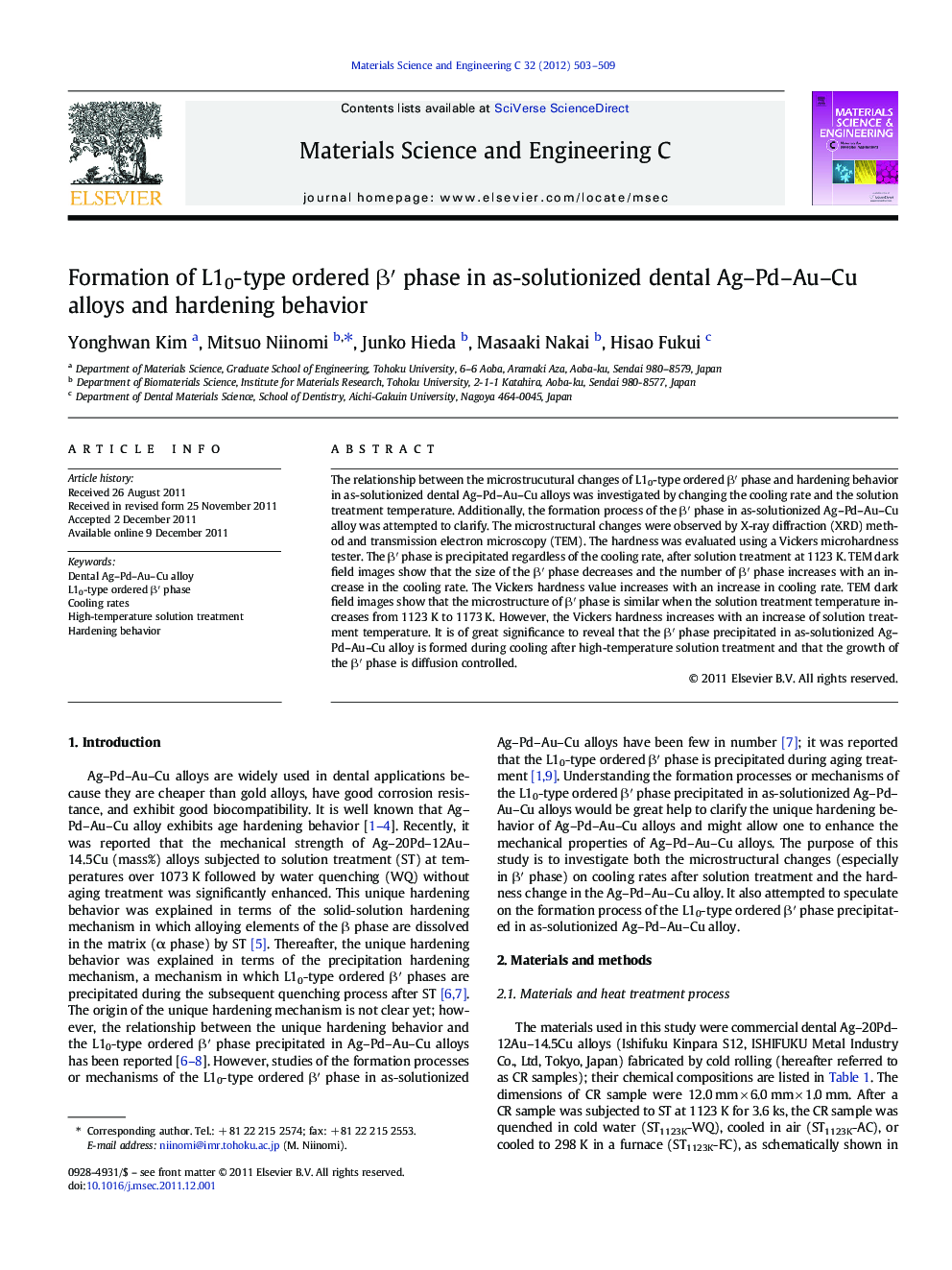| Article ID | Journal | Published Year | Pages | File Type |
|---|---|---|---|---|
| 1429129 | Materials Science and Engineering: C | 2012 | 7 Pages |
The relationship between the microstrucutural changes of L10-type ordered β′ phase and hardening behavior in as-solutionized dental Ag–Pd–Au–Cu alloys was investigated by changing the cooling rate and the solution treatment temperature. Additionally, the formation process of the β′ phase in as-solutionized Ag–Pd–Au–Cu alloy was attempted to clarify. The microstructural changes were observed by X-ray diffraction (XRD) method and transmission electron microscopy (TEM). The hardness was evaluated using a Vickers microhardness tester. The β′ phase is precipitated regardless of the cooling rate, after solution treatment at 1123 K. TEM dark field images show that the size of the β′ phase decreases and the number of β′ phase increases with an increase in the cooling rate. The Vickers hardness value increases with an increase in cooling rate. TEM dark field images show that the microstructure of β′ phase is similar when the solution treatment temperature increases from 1123 K to 1173 K. However, the Vickers hardness increases with an increase of solution treatment temperature. It is of great significance to reveal that the β′ phase precipitated in as-solutionized Ag–Pd–Au–Cu alloy is formed during cooling after high-temperature solution treatment and that the growth of the β′ phase is diffusion controlled.
► The microstructure of β′ phase of Ag-Pd-Au-Cu alloy is changed by cooling rates. ► The β′ phase is formed during the cooling process. ► Growth of the β′ phase is dominated by diffusion. ► Hardness of Ag-Pd-Au-Cu alloy increases remarkably with precipitation of the β′ phase.
